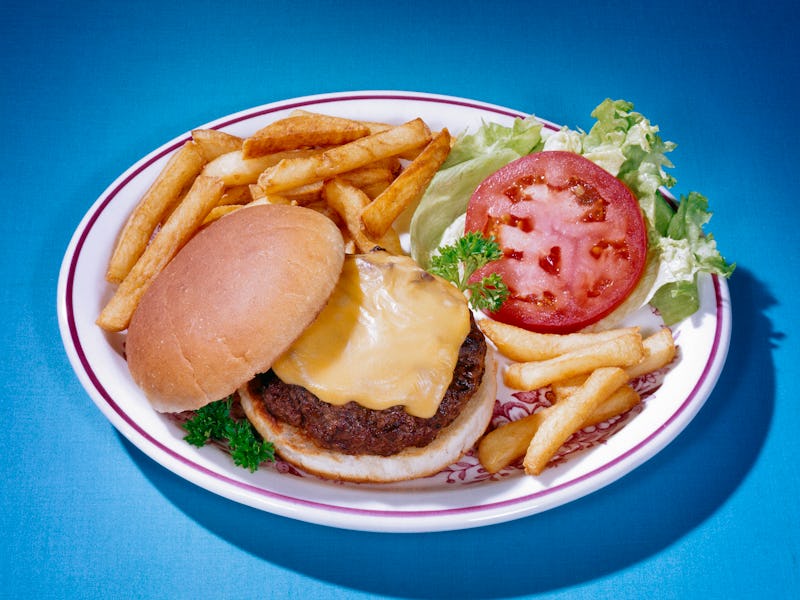Scientists calculate the number of take-out meals that increase chance of death
On the bright side, the quality of “outside” food has improved over time.

For some, it’s a treat to have noodles, pizza, and more delivered — especially since eating at a restaurant comes with certain challenges since Covid-19.
However, scientists have a new warning about takeout: Too much of it does not bode well for a long life.
In a new study published in the Journal of the Academy of Nutrition and Dietetics, researchers found that in a large pool of Americans, those who very frequently ate meals prepared outside their home increased their risk of mortality when compared to those who ate very few meals they didn’t prepare themselves.
However, the why likely comes back to what is being eaten — rather than where it was prepared.
The study’s senior author is Wei Bao, an assistant professor of epidemiology at the University of Iowa’s College of Public Health. Bao tells Inverse that the key is to focus on what is actually being eaten, regardless of who made it.
“Meals prepared at home are not always better than meals prepared away from home,” Bao says. “Diet quality is important.”
LONGEVITY HACKS is a regular series from Inverse on the science-backed strategies to live better, healthier, and longer without medicine. Get more in our Hacks index.
HOW IT AFFECTS LONGEVITY — People who ate meals prepared outside the home more than twice a day have a higher risk of dying than those who ate out once per week or less.
Prepared outside the home means meals put together at restaurants, supermarkets, by food vendors, and so on. The takeout group was 49 percent more likely to die than those who rarely, if ever, ate out.
While that’s a good argument for stocking up on those pantry staples and picking up a cookbook, it doesn’t mean that your lifespan will be reduced. Of the people in the study who died from every cause over 15 years, the ratio of those who had eaten out very frequently was higher than those who hardly ate out.
According to the study’s results, those who ate out as frequently as 7 to 13 times a week showed a lower risk of mortality than the one time per week group. This suggests those who ate outside the home just a little less frequently may not be at greater risk of dying than those who barely did. But importantly, the study authors report their confidence in that statistic was low enough for the result to be inconclusive.
Critically, studies like these show a pattern of association. We can’t conclusively say more takeout causes death, other factors may affect the ultimate result. For example, those who ate outside the home more than twice a day were also likely to be obese, male, white, and have poorer diet quality overall.
According to Wei Bao, the senior study author, people who eat outside of the home more often tend to also eat more fried food.
HOW TO TURN THIS INFO INTO A LONGEVITY HACK — Previous research suggests meals prepared outside the home are likely to be high in sodium, calories and saturated fats. We also know that eating more fatty, salty, and processed foods can put us at risk for ailments like heart disease, type 2 diabetes, and high blood pressure. Ordering food at a restaurant or for delivery can also take a toll financially.
However, only a few studies have directly linked takeout meals with the risk of death.
This study serves as a compelling piece of evidence, suggesting those who ate outside the home very frequently were not only less healthy, but were also at a higher risk of dying — even when the study authors adjusted for other factors like socioeconomic status, race, age, and body mass index.
In a time when more Americans than ever are eating outside the home, and there is an ever-increasing number of restaurants from which to choose, the temptation to eat out might be bigger than ever. But the very things that often make outside food so delicious might also put health at risk.
SCIENCE IN ACTION — To get to their final numbers, researchers looked at health information gathered from 35,084 adults who took a large survey called the National Health and Nutritional Examination Survey (NHANES) sometime between 1999 and 2014. In 2015, the study team determined who of those people had died using death records. They also looked at what they had reported about their eating habits.
The study team then compared the risk of dying from all causes (and also from cardiovascular disease and cancer) within subgroups who reported various frequencies of eating meals prepared outside the home.
Until 2004, those who had taken the survey were asked the question: “On average, how many times per week do you eat meals that were prepared in a restaurant?” From 2005 to 2014, the wording was: “During the past 7 days, how many meals did you get that were prepared away from home in places such as restaurants, fast food places, food stands, grocery stores, or from vending machines?”
Because the question only addressed “restaurants” and not other eat-out establishments earlier on in the survey, the real number of people eating meals prepared outside the home frequently might have been even higher.
On the bright side, Bao says the quality of “outside” food has improved over time.
“We want to find out whether changes in the food quality from restaurants will affect people’s health in future studies,” he says. That’s enough of a reason as any to allow yourself a burrito every once in a while.
HACK SCORE OUT OF 10 — 🌯🥡🌮🍔🌯🥡/10
This article was originally published on